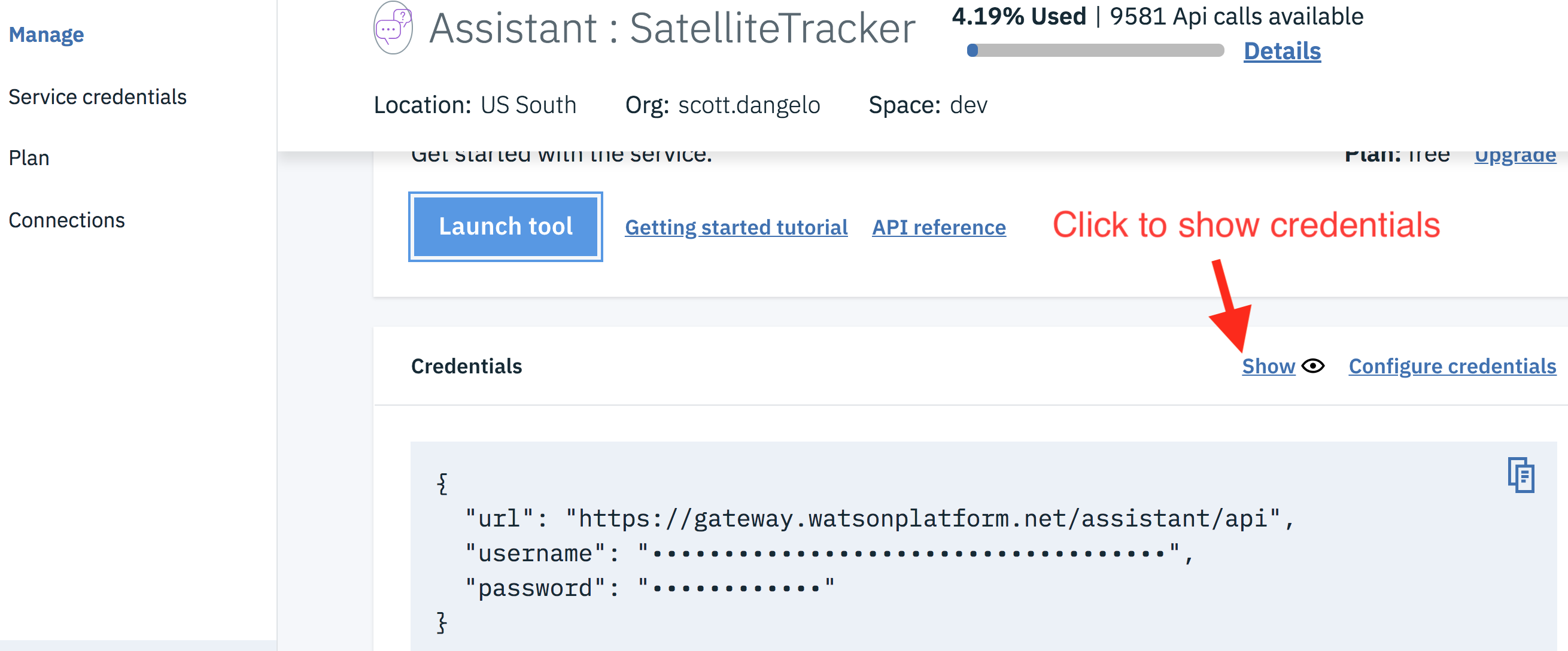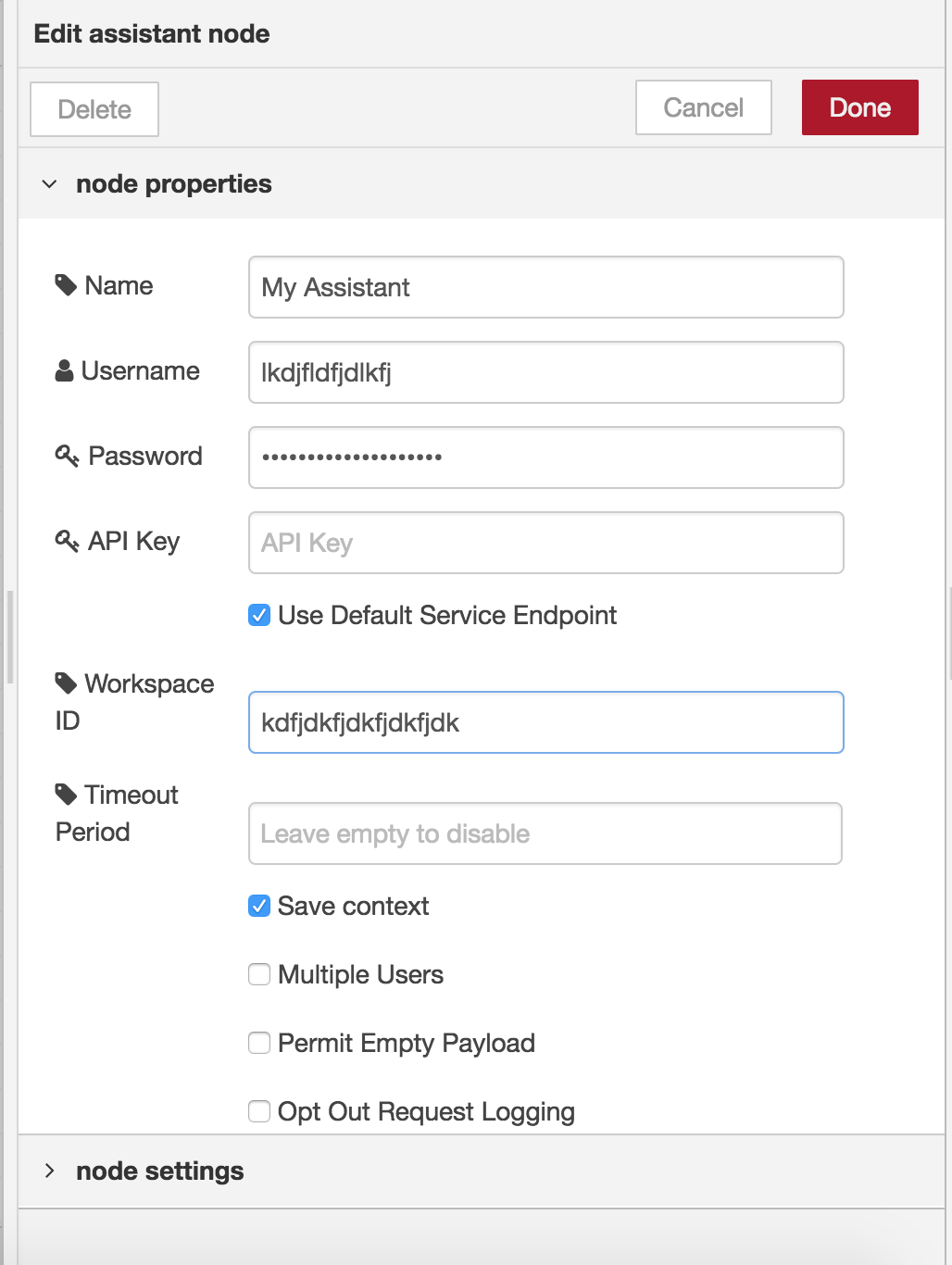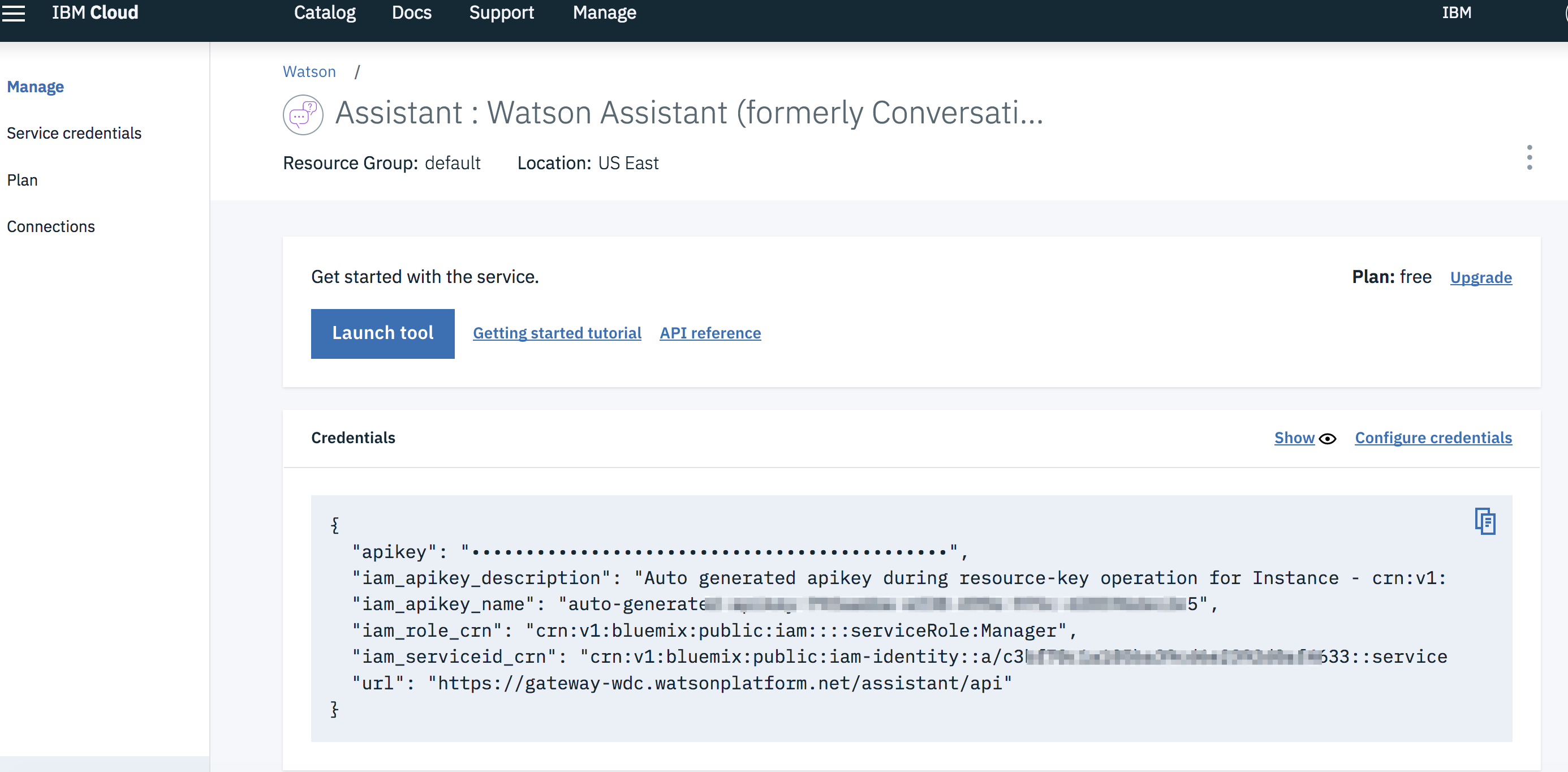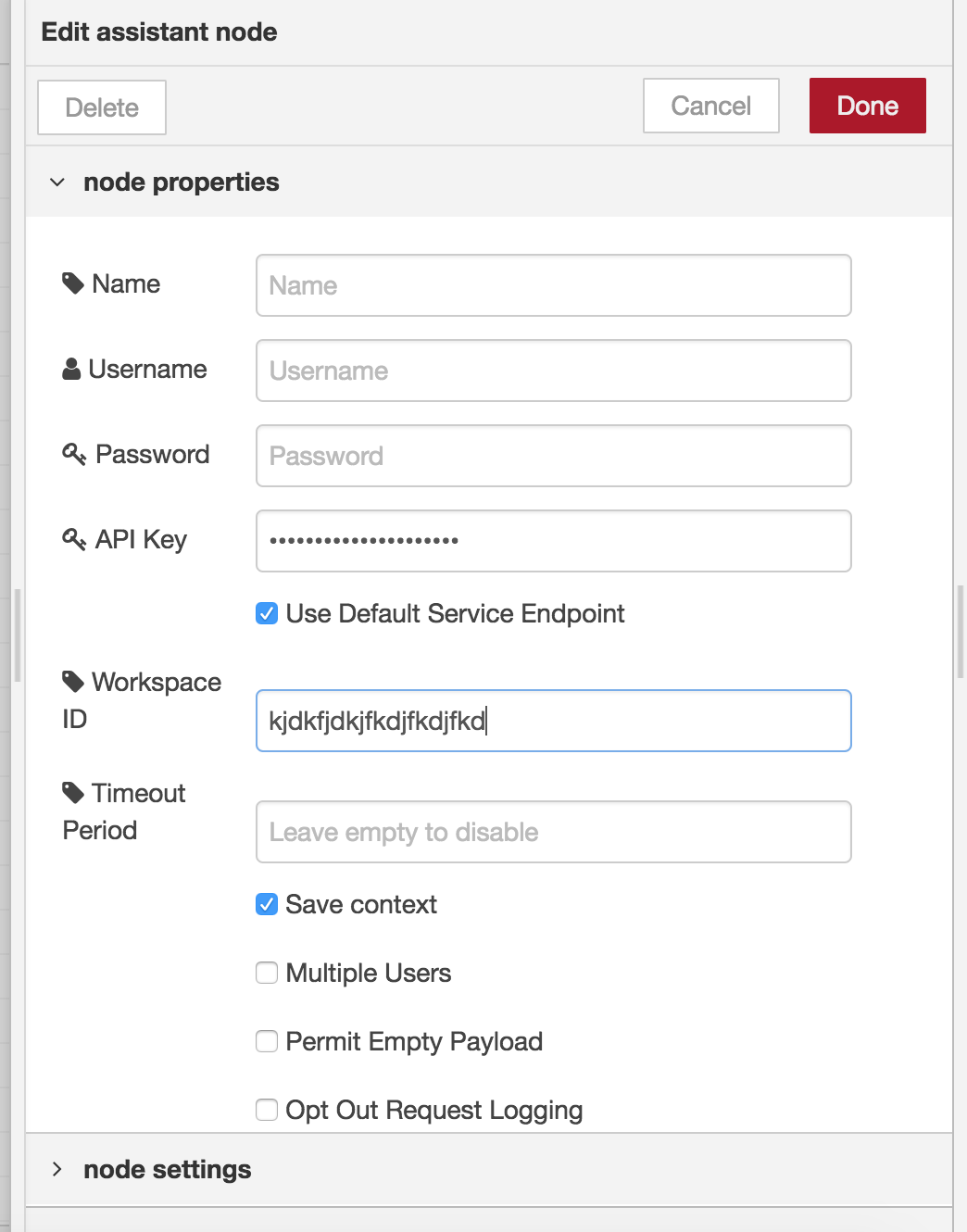Watson Conversation is now Watson Assistant. Although some images in this code pattern may show the service as Watson Conversation, the steps and processes will still work.
There is a technological revolution taking place in the service industry with the introduction of Robots. The Robots are powered by artifical intelligence and are able to perform the roles of a waiter, customer relationship executive, cognitive assistant etc. The capabilities of the robot can be enhanced exponentially by integrating with cloud capabilities.
This code pattern demonstrates a scenario where the robot can answer queries on financial data by integrating with IBM Watson Assistant service and IBM Watson Studio. We will take you through the end to end flow of steps in building an interactive interface between NAO Robot, Watson Assistant API & Watson Studio.
When the reader has completed this code pattern, they will understand how to:
- Establish the communication between NAO Robot and IBM Watson Studio with Watson Assistant.
- Create the Watson Assistant chat bot application.
- Perform statistical analysis on a financial dataset using Jupitor (Python) Notebook on IBM Watson Studio.
The intended audience for this code pattern are developers who want to develop a complete analytics solution on Watson Studio with a custom web user interface. This code pattern can be extended for other use cases that integrate Watson Assistant and Watson Studio to enable exchange of information and process natural language along with mining the data to generate insights. For example:
- Sales assist: provide recommendations to onfield sales agent for insurance domain
- Retail Sector: Inventory planning
- Manufacturing Sector: Monitoring the systems
- Concierge: Travel and Hospitality
The data set used in this code pattern is data/data.csv and originates from a Watson Analytics blog post.
- The user asks the questions on the dataset to the NAO Robot.
- The NAO Robot will convert the speech to text, and will send the text to Node-RED Flow for further processing on the cloud. The results from the processing on the cloud is returned to the NAO Robot through the Node-RED flow.
- Node-RED flow sends the converted text to the Watson Assistant API.
- The Watson Assistant API takes the text input. The text is analyzed to determine the intent based on the training provided.
- The context and state of the conversation is saved to the Cloudant DB to track the conversation flow of the user.
- The dataset for analysis is stored in the Object storage.
- Data file is taken as input in csv format.
- The Jupyter notebook receives the Watson Assistant Service API output from Node-RED using Web Sockets. The notebook processes the data based on the question and generates insights. The insights are sent back to the Node-RED flow using Web Socket.
- The Jupyter notebook is powered by Spark.
- The Node-RED flow sends the insights to NAO Robot.
-
Nao-Robot Choregraphe Behaviour: The fruit of a unique combination of mechanical engineering and software, NAO is a character made up of a multitude of sensors, motors and software piloted by a made-to-measure operating system: NAOqi OS.
-
Node-RED: Node-RED is a programming tool for wiring together APIs and online services.
-
Watson Assistant: Build, test and deploy a bot or virtual agent across mobile devices, messaging platforms, or even on a physical robot.
-
IBM Watson Studio: Analyze data using RStudio, Jupyter, and Python in a configured, collaborative environment that includes IBM value-adds, such as managed Spark.
-
Jupyter Notebooks: An open-source web application that allows you to create and share documents that contain live code, equations, visualizations and explanatory text.
Follow these steps to setup and run this code pattern. The steps are described in detail below.
- Sign up for IBM Cloud
- Create IBM Cloud services
- Configure Watson Assistant Application
- View Watson Assistant Intents, Entities and Dialog
- Import the Node-RED flow
- Note the websocket URL
- Create a new Watson Studio project
- Create the notebook
- Add the data
- Update the notebook with service credentials
- Run the notebook
- Results sent to the Node Red Flow
- Update the NAO Robot Choregraphe Behaviour with service credentials and Node-RED URL
- Transfer the behaviour to NAO Robot
Sign up for IBM Cloud. By clicking on create a free account you will get 30 days trial account.
Create the IBM Cloud services by following the link to use the IBM Cloud UI.
-
-
Choose an appropriate name for the Node-RED application. Click on
Create. -
On the newly created Node-RED application page, Click on
Visit App URLto launch the Node-RED editor once the application is inRunningstate. -
On the
Welcome to your new Node-RED instance on IBM Cloudscreen, Click onNext -
On the
Secure your Node-RED editorscreen, enter a username and password to secure the Node-RED editor and click onNext -
On the
Browse available IBM Cloud nodesscreen, click onNext -
On the
Finish the installscreen, click on Finish -
Click on
Go to your Node-RED flow editor
-
-
-
Choose an appropriate name for the Watson Assistant Service. Click on
Create. -
On the newly created Watson Assistant Service page, click on
Service credentialsthenView credentialand note down the credentials for future use. -
On the same page, on the left side now click on
Manageicon then on the right side click onLaunch toolto launch start configuring Watson Assistant.
-
-
Launch the Watson Assistant tool.
-
Clone the repo locally. In a terminal, run:
git clone https://github.com/IBM/watson-nao-robot
-
Locate the file workspace.json locally.
-
From the Watson Assistant tool, click on the
uploadicon to import a workspace. -
Click to choose a file, navigate to
workspace.jsondocument and selectImport. -
Click on
Watson Assistantat the top to go back to the workspace listing. -
Find the
Workspace IDby clicking on the context menu (three vertical dots) of the new workspace and selectView details. -
Click on the
View details. Note down theWorkspace ID.
To view the conversation Intents, Entities and Dialog select the workspace and choose the Intents tab, Entities tab and Dialog tab.
Intents
Intents are purposes or goals expressed in a customer's input, such as answering a question or processing a bill payment. By recognizing the intent expressed in a customer's input, the Watson Assistant service can choose the correct dialog flow for responding to it.
Entities
Entities represent a class of object or a data type that is relevant to a user's purpose. By recognizing the entities that are mentioned in the user's input, the Watson Assistant service can choose the specific actions to take to fulfill an intent.
There are two types of the entities available under the Watson Assistant. One is My entities and another is System entities. Refer below for My Entities.
In this conversation two system entities have been used namely @sys-date and @sys-number. User has to switch on the button before using it.
Dialog
The dialog uses the intents and entities that are identified in the user's input, plus context from the application, to interact with the user and ultimately provide a useful response.
In this conversation, the slots feature under dialog has been used to gather multiple informations from the user. Slots for Max dialog is represented in the above image.
-
From the cloned repo navigate to the node-red-flow folder.
-
Open the
NODERED_BASED_URLand click onGo To Your Node-RED flow editorto launch the Node-RED editor. -
Import both Node-RED flows into the editor in two separate Node-RED instances.
-
Update the Node-RED URL (replace
NODERED_BASE_URLwith the correct URL in the first_flow.json) under path in the json file. -
Open the
first_flow.jsonfile with a text editor and copy all the contents to Clipboard in the first instance of Node-RED app. -
In the second instance of Node-RED app, open the
second_flow.jsonfile with a text editor and copy all the contents to Clipboard. -
On the Node-RED flow editor for both flows, click the Menu and select
Import->Clipboard, select new flow and paste the contents from text editor & clickImport. -
Components of Node-RED flow includes a web socket server, Watson Assistant Service, Watson Studio & user defined functions which tie them together to enable exchange of information.
-
Please review steps 1 to 10 under the Architecture diagram to understand the flow of events using Node-RED.
-
Double click on the
conversationnode.Edit conversation nodeprompt will open. -
Enter the
Workspace IDthat we noted in Configure Watson Assistant Application. -
If the service credentials from IBM Watson Assistant are username/password based as shown in the diagram below
-
Add username & password from Watson Assistant as shown below & click
Done. -
If the service credentials from IBM Watson Assistant are IAM based as shown below in the diagram
-
Add the API key, Workspace ID as shown below and click
Done
The websocket URL is ws://<NODERED_BASE_URL>/ws/orchestrate where the NODERED_BASE_URL is the marked portion of the URL in the above image.
Note: An example websocket URL for a Node-RED app with name
myApp-ws://myApp.mybluemix.net/ws/orchestratewheremyApp.mybluemix.netis theNODERED_BASE_URL. TheNODERED_BASE_URLcan have an additional region information sayeu-gbfor UK region andNODERED_BASE_URLcould bemyApp.eu-gb.mybluemix.net.
-
Sign up or log into IBM's Watson Studio. Once in, you'll land on the dashboard.
-
Create a new project by clicking
+ New projectand choosingData Science: -
Enter a name for the project name and click
Create. -
NOTE: By creating a project in Watson Studio a free tier
Object Storageservice andWatson Machine Learningservice will be created in your IBM Cloud account. Select theFreestorage type to avoid fees. -
Upon a successful project creation, you are taken to a dashboard view of your project. Take note of the
AssetsandSettingstabs, we'll be using them to associate our project with any external assets (datasets and notebooks) and any IBM cloud services.
-
From the new project
Overviewpanel, click+ Add to projecton the top right and choose theNotebookasset type. -
Fill in the following information:
- Select the
From URLtab. [1] - Enter a
Namefor the notebook and optionally a description. [2] - Under
Notebook URLprovide the following url: https://github.com/IBM/watson-nao-robot/blob/master/notebook/robo_notebook.ipynb [3] - For
Runtimeselect thePython 3.5option. [4]
- Select the
-
Click the
Createbutton. -
TIP: Once successfully imported, the notebook should appear in the
Notebookssection of theAssetstab.
-
This notebook uses the dataset data.csv. We need to load this assets to our project.
-
From the new project
Overviewpanel, click+ Add to projecton the top right and choose theDataasset type. -
A panel on the right of the screen will appear to assit you in uploading data. Follow the numbered steps in the image below.
- Ensure you're on the
Loadtab. [1] - Click on the
browseoption. From your machine, browse to the location of thedata.csvfile in this repository, and upload it. [not numbered] - Once uploaded, go to the
Filestab. [2] - Ensure the files appear. [3]
- Ensure you're on the
Launchh the notebook and select the cell below 2. Read the Data & convert it into Dataframe section in the notebook.
Use Find and Add Data (look for the 10/01 icon) and its Files tab. You should see the file names uploaded earlier. Make sure your active cell is the empty one created earlier. Select Insert to code (below your file name). Click Insert pandas DataFrame from drop down menu.
In the cell below 7. Expose integration point with a websocket client, update the websocket url noted in section 5 in the start_websocket_listener function.
When a notebook is executed, what is actually happening is that each code cell in the notebook is executed, in order, from top to bottom.
Each code cell is selectable and is preceded by a tag in the left margin. The tag
format is In [x]:. Depending on the state of the notebook, the x can be:
-
A blank, this indicates that the cell has never been executed.
-
A number, this number represents the relative order this code step was executed.
-
A
*, this indicates that the cell is currently executing. -
Click the
(►) Runbutton to start stepping through the notebook.
The results from Watson Studio are sent to Node-RED based URL which is relayed to NAO Robot. The response time for the answer to the question is approximately 8 seconds.
Let's see a few sample responses:
User: What is the highest profit of Capri Italy in 2007?
NAO: The highest profit of Capri Italy in 2007 is 120,000.
NOTE: Choregraphe works only with Python 2x. Please use Python 2x for Choregraphe service.
Open the NAO robot project WatsonNaoRobot.pml. Connect to the NAO robot using the Connection -> Connect menu from Choregraphe.
- Select the
behavior.xarfile in the project folder structure in the top left pane. - Double click the
WatsonSTT Python Scriptbox in the choregraphe canvas pane. - Update the Watson Speech to Text credentials in the
authvariable in the Python code inside thePython Scriptbox as shown below.
- Select the behavior.xar file in the project folder structure in the top left pane.
- Double click the
PostToNode-RED Python Scriptbox in the choregraphe canvas pane. - Update the Node-RED URL in the
urlvariable in the Python code inside thePython Scriptbox as shown below.
Save the changes to the NAO robot project (WatsonNaoRobot.pml).
- Select
Connectionfrom Choregraphe Menu and clickUpload to the robot and Playsub menu to transfer behavior files to the NAO Robot and activate this code on the Robot. - Press the front tactile head sensor of the NAO robot and ask your question related to the dataset analysis and insights.
This code pattern is licensed under the Apache Software License, Version 2. Separate third party code objects invoked within this code pattern are licensed by their respective providers pursuant to their own separate licenses. Contributions are subject to the Developer Certificate of Origin, Version 1.1 (DCO) and the Apache Software License, Version 2.
































